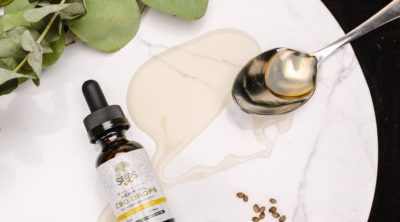
You can reap the milk thistle benefits optimally only if you stick to the recommended dosage. Read this article to find out what exactly is the correct dosage for milk thistle.
Also called “lady’s thistle”, “St. Mary’s thistle” or “Marian thistle” given that it is believed to boost the milk production in breast-feeding mothers, the medicinal qualities of the herb milk thistle has been hailed since archaic times. Used widely by the ancient Romans and the Greeks, even literary references of this herbal supplement indicate that its positive effects on the liver has been known for quite sometime now.
It found its place in the works of the Roman naturalist and philosopher Gaius Plinius Secundus (Pliny, the Elder) who held milk thistle to be usefully responsible for “carrying off bile” back in the 1st century AD.
Then again the 1597 notes of the sixteenth century herb doctor, John Gerard bore evidence that milk thistle was potent enough to “expel melancholie” or depression, being a “friend to the liver and blood” as Westmacott put it in 1694.
Remember, depression in those days was considered to be a condition created by liver malfunction. So, milk thistle benefits have been known since time immemorial now.
Traditionally, milk thistle was used as an antidote for death cap mushroom or Amanita phalloides poisoning. Modern studies have yielded results authenticating this information. Milk thistle has successfully counteracted the poisonous effects of Amanita phalloides entirely when given to animals within the first 10 minutes of poisoning. If the dose is given within the first 24 hours, then it becomes possible to keep hepatic damage and death at bay. Today, the medical world is still studying the effects of milk thistle on patients of viral hepatitis, alcoholic hepatitis, and alcoholic cirrhosis. The result is still inconclusive as the experiments are faced with some technical glitches. The medical fraternity is also continuing to study the potency of milk thistle when it comes to cancer treatment. Even though early lab studies have shown that milk thistle inhibits further division and replication of malignant cells in the body, reduces their lifetime, and curtails the supply of blood to cancerous tumors due to the presence of silymarin and other active substances, these test tube results are yet to be tested on human beings in real life scenarios.
Agreed it is a beneficial herb, but before ingesting any herb, the side effects of herbs have to be kept in mind. Naturally, to avoid these adverse effects, one must adhere to proper dosage recommendations. So, what is the correct milk thistle dosage? Find out from the following paragraphs.
To keep the usual milk thistle side effects – headache, weakness, insomnia, and possible impotency – at bay, one must keep a strict eye on the consumption of milk thistle. The problem starts from the fact that no dietary supplement requires a nod and stamp of the FDA and hence clinical researches on acceptable and effective dosages are seldom performed. As a result, most of the time a tentative dosage is recommended and even if a more potent dosage exists, one really does not know of it. Also, one needs to be really careful as to who the manufacturer of the supplement is as these items do not need to undergo perfunctory, regulatory checks before going into the market. So, a possibility of presence of contaminants exist. Both these issues exist when it comes to milk thistle as well.
Milk thistle is available in the market in variant forms, such as liquid extract, tincture, silymarin-phosphatidylcholine complex, dried herb capsules, milk thistle tea, and even the milk thistle fruit is abundantly available. The green foliage of the plant can be cooked and consumed or eaten raw in salads.
In case you are seeking to use milk thistle for liver treatment, then a plausible dosage would be anything between 280 – 420 mg per day with about 70 – 80% of silymarin content. Of course the doses have to be equally distributed throughout the day. In case you have opted for the silymarin-phosphatidylcholine complex, consume not more than 100 – 200 mg of it and have it twice. It is better that you check the silymarin content (the active ingredient in milk thistle is made up of flavonolignans – silibinin, silydianin, isosilybin, and silychristin) in the milk thistle product as it can be anything between 50 – 500 mg. Since this flavonoid renders the herb effective in multiple ways with its anti-inflammatory, antioxidant, and minimal toxin permeability properties, it is imperative that you look out for this component. Most items commonly have about 175 mg of it. But it is also recommended to opt for silymarin in milk thistle rather than only silymarin injections. The fruit comprises about 1 – 7% of silymarin.
Also, definitely consult a doctor if you wish to give your child this herb as milk thistle dosage for children should not be more than ⅓ of the stipulated dosage of an adult.
Milk thistle is believed to be able to reverse the ravages of dope and alcohol abuse and turn the liver back into ship-shape condition. For this purpose you can take silymarin-phosphatidylcholine about three times each day. In case you wish to protect the cells of your liver from possible poisons (by the likes of carbon tetrachloride or the fatally venomous Amanita phalloides) that could prove fatal, then 2 capsules of approximately 120 mg of silymarin can be opted for and consumed twice a day.
| Purpose of Milk Thistle Usage | Recommended Dosage (mg) |
| For liver treatment | 280 – 420 mg/day (about 70 – 80% of silymarin) |
| Silymarin-phosphatidylcholine complex for liver treatment | 100 – 200 mg twice/day |
| For diabetes treatment | 200 mg thrice/day |
| For intrahepatic cholestasis treatment in pregnant women | 560 mg/day for 16 days |
| For reversing liver damage due to alcohol | Two 120 mg silymarin-phosphatidylcholine capsules twice/day |
Milk thistle for liver detox is not only used for humans. It is used for canines as well. Milk thistle helps reduce and cure problems such as fatty liver, pancreatitis, dog liver cancer, hepatitis, and heartworms among other issues that can plague the health of your pet dog. According to the data supplied by “Healthy Pets – Naturally”, the dosage of milk thistle for dogs depends heavily on the weight of the canine. For example, if a dog weighs about 5 pounds, then the prescribed dosage should correspond with 10% of the adult human dosage.
| Weight of Canine | Recommended Dosage (%) |
| 05 – 10 lbs. | 15 |
| 11 – 20 lbs. | 20 |
| 21 – 40 lbs. | 30 |
| 41 – 70 lbs. | 50 |
| 71 – 100 lbs. | 75 |
But if your canine is exactly or more than 100 lbs. in weight, then the milk thistle dosage should equal the normal adult human dosage.
So there you have it, milk thistle dosages for humans and the best friends of humans. Remember that you need to consult a doctor before following any dosage at all as the human body is a peculiar contraption which malfunctions even without an apparent reason. It would also be beneficial to note that milk thistle tea is not half as potent as the dried herb form as silymarin doesn’t dissolve in water and, therefore, intestinal absorption of it is lesser in the fluid format. Inform the doctor if you are also on anxiolytics, antipsychotics, anticoagulants, anticancer drugs, statins, and seizure prevention drugs, as most of these are worked upon by some major hepatic enzymes and thus, milk thistle might disrupt their course of action. Exercise caution and you shall successfully avoid the side effects of milk thistle and optimally exploit all the good it has to offer.
Disclaimer: This article is for informative purposes only, and should not be used as a replacement for expert medical advice.


